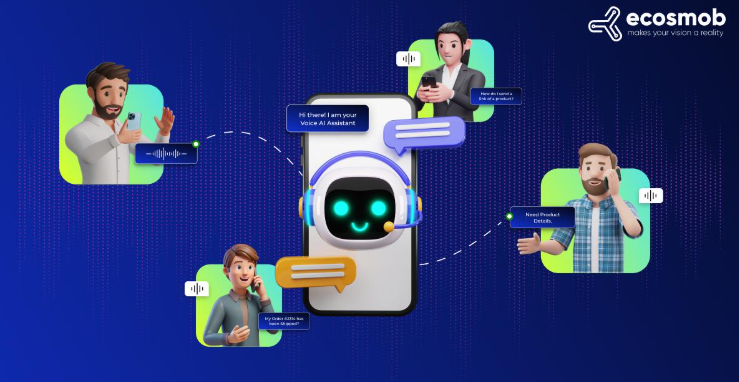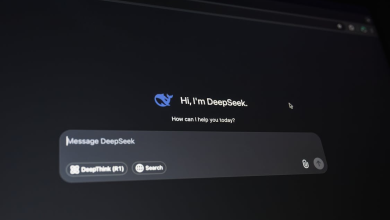
When people hear “Voice AI,” many instantly picture a chatbot that talks. But the reality is far more sophisticated. Modern voice AI contact center technology is not just a chatbot with vocal cords, it’s an intelligent, context-aware system capable of understanding, predicting, and personalizing customer interactions in real time. From automating repetitive tasks to guiding live agents with actionable insights, Voice AI is transforming how businesses deliver customer service.
In this blog, we’ll explore practical, AI use cases in contact center operations that go far beyond scripted conversations, real-world applications that boost efficiency, improve customer experience, and deliver measurable business impact.
What Is Voice AI in Contact Centers?
At its core, Voice AI in contact centers refers to the use of artificial intelligence to understand, process, and respond to human speech during live or automated calls. Unlike text-based AI chatbots that rely solely on written input, call center voice AI works in real time, analyzing spoken language, tone, and context to deliver accurate, human-like interactions.
The difference lies in capability and depth. Text-based bots handle predefined queries, while voice-enabled AI solutions can manage dynamic conversations, switch between languages, and even detect emotions. The backbone of these systems includes:
Natural Language Processing (NLP): Helps AI understand and interpret speech patterns.
Speech Recognition: Converts spoken words into text the AI can process.
Sentiment Analysis: Identifies the caller’s mood or emotional state.
AI-Driven Routing: Directs calls to the right agent or department based on context and priority.
This shift from simple scripts to intelligent engagement sets the stage for why businesses are moving away from old-school IVR menus and limited chatbot systems.
Why are Businesses Switching from Simple Chatbots to Advanced Voice AI?
Not too long ago, contact centers relied heavily on IVR menus (“Press 1 for…”) and basic chatbots to handle customer inquiries. While these tools provided some level of automation, they were fundamentally limited. They could only respond to pre-programmed questions, follow rigid scripts, and often left customers feeling frustrated when their issues didn’t fit neatly into those boundaries.
Today’s customers expect more. They want real-time answers, context-aware responses, and conversations that feel natural, not like they’re talking to a machine. They want AI in contact center technology that understands not just their words but also their intent, tone, and urgency. This is where advanced contact center voice AI comes in.
Modern Voice AI can analyze sentiment, detect frustration, and even adjust its response based on the customer’s mood. It doesn’t just read from a script, it interprets, adapts, and engages. This leap in capability is also driven by the rise of global business, where AI voice assistant for call center solutions must handle multiple languages, dialects, and cultural nuances seamlessly.
In short, the shift is about moving from transactional interactions to relationship-driven experiences. Businesses are realizing that meeting these expectations requires more than a chatbot, it requires a smarter, context-aware contact center AI platform.
Top 7 Real-World Voice AI Use Cases Beyond Chatbots
When we talk about AI use cases in contact center operations, it’s important to understand that we’re dealing with a broad spectrum of capabilities, far beyond answering FAQs. Here’s where Voice AI shines in real-world scenarios:
- Intelligent Call Routing & Prioritization
Voice AI can assess a caller’s profile, previous interactions, and even emotional tone to route the call to the most suitable agent or department. For example, if the AI detects frustration in the customer’s voice, it can escalate the call to a senior support specialist immediately, reducing wait times and improving resolution rates.
- Automated Post-Call Summaries & Documentation
Manual after-call work (ACW) is time-consuming for agents. With call center voice AI, transcripts and summaries are generated in real time, automatically updating CRM records and freeing agents to focus on their next customer. This improves both productivity and accuracy.
- Real-Time Agent Assistance & Coaching
During live calls, AI can listen in and offer instant guidance, be it compliance alerts, product recommendations, or even upselling opportunities. For example, in a financial services contact center, the AI might prompt the agent with relevant regulatory details during a complex customer inquiry.
- Predictive Customer Behavior & Next-Best-Action Recommendations
AI doesn’t just react, it predicts. Based on historical data and conversation flow, it can anticipate a customer’s needs and suggest proactive solutions. Imagine receiving an outage notification before you even call, or being offered a tailored loyalty reward mid-conversation.
- Multilingual & Accent-Adaptive Voice Support
With global customers, language barriers can slow service and hurt satisfaction. Voice AI contact center systems can detect accents, translate in real time, and even adapt to different speech patterns, making communication seamless and inclusive.
- Compliance Monitoring & Fraud Detection
Voice biometrics can confirm caller identity in seconds, while AI algorithms detect anomalies in speech that might indicate fraudulent activity, helping businesses safeguard customer trust and comply with regulations.
- Sentiment & Emotion Analytics for Service Improvement
By continuously analyzing tone, pace, and word choice, AI can measure sentiment and alert supervisors when intervention is needed. Over time, these insights guide targeted training to improve the overall customer experience.
Collectively, these contact center AI use cases prove that Voice AI is much more than a “talking chatbot”; it’s an end-to-end performance enhancer.
Business Impact of Implementing Voice AI in Contact Centers
Integrating AI for contact center operations doesn’t just streamline processes, it fundamentally changes business outcomes.
Reduced Handling Times & Increased First Call Resolution (FCR):
Voice AI eliminates the back-and-forth by routing calls correctly from the start and providing agents with the right context before they even say “hello.” This means customers get answers faster, and issues are resolved in a single interaction more often.
Enhanced Customer Satisfaction (CSAT) & Net Promoter Scores (NPS):
When customers feel heard and understood, they’re happier, and happier customers are more likely to stay loyal. Sentiment analysis and personalized interactions directly translate into improved CSAT and NPS scores.
Cost Savings Without Losing the “Human” Feel:
Automation powered by contact center AI solutions can handle repetitive or low-complexity queries without tying up live agents. The result? Lower operational costs and the ability for human agents to focus on high-value, empathy-driven conversations.
Data-Driven Insights for Continuous Improvement:
Just like AI accounting software turns raw financial data into actionable insights, Voice AI analyzes conversations to refine customer engagement strategies
Ultimately, the ROI isn’t just in efficiency gains, it’s in long-term relationship building, customer retention, and brand loyalty.
Challenges & Considerations Before Deployment
While the opportunities are huge, successful Voice AI adoption requires careful planning.
Data Privacy & Compliance: Voice data is sensitive and must meet legal and regulatory requirements.
AI Training & Bias Prevention: Poor training data can lead to inaccurate or biased responses.
Seamless Integration: The AI must work harmoniously with existing CRM, telephony, and analytics tools.
Addressing these challenges ensures your call center voice AI solution performs as intended while maintaining trust.
Future Trends in Voice AI
The next phase of AI in contact center evolution is about going beyond efficiency toward true personalization and autonomy.
Hyper-Personalized Customer Journeys:
AI will use deep customer profiles, combining purchase history, past conversations, and behavioral patterns powered by well-structured datasets prepared through outsourced data annotation. Every conversation will feel like it’s tailored for that specific customer.
Deeper Integration with CRM & Analytics Tools:
Voice AI will work hand-in-hand with CRM systems, pulling relevant data in real time and logging outcomes instantly. This will not only make interactions smoother but also give businesses richer insights into customer needs.
Fully Autonomous AI Agents:
In certain scenarios, AI voice assistants for call center solutions will be capable of handling end-to-end conversations without human intervention, even for moderately complex queries. These agents will be indistinguishable from humans in tone, empathy, and problem-solving ability.
Proactive, Not Reactive, Support:
Future contact center AI platforms will detect potential issues before they happen, such as flagging an at-risk customer and initiating a retention call automatically.
In the coming years, AI software development companies that adopt and refine Voice AI early will be positioned far ahead of competitors, able to deliver faster, smarter, and more personalized customer experiences at scale.
Wrapping Up
Voice AI is no longer just a smarter chatbot, it’s a strategic business tool that enhances every stage of customer engagement. From intelligent routing to multilingual support and sentiment analysis, contact center AI use cases are shaping the future of customer service.
At Ecosmob, we specialize in building tailored AI voice assistant for call center solutions that integrate seamlessly with your existing systems. Our expertise in contact center AI platforms ensures you get technology that’s accurate, scalable, and aligned with your business goals, helping you transform interactions into lasting relationships.



